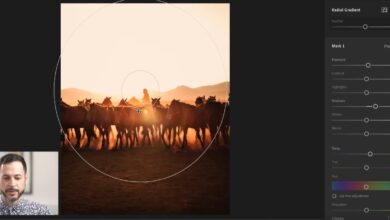Fujifilm has finally figured it out with its latest X-Mount camera: the X-T5

Fujifilm recently announced X-T5 camera, is the latest camera in the X Mount series. Despite the fact that the X-T5 isn’t the most feature-packed camera Fujifilm has ever produced, it does send a big message to its audience and customer base. Fujifilm has finally figured out its camera line for the X Mount.
Fujifilm has released a wide variety of X Mount cameras. For the most part, this is great, because there are so many options available to the market. Unfortunately, the number of different X Mount cameras on the market has blurred the lines a bit. For example, the Fujifilm XT series of cameras have been the company’s flagship series for quite some time. Fujifilm then released the X-H1, which looks set to replace the XT series as mainstream; However, it does not provide enough.
Fortunately, we now have clarity in the X Mount system with how Fujifilm has differentiated between the X-H2 and the X-T5 cameras.
A Bumpy Ride

Fujifilm released the X-H1 in 2018. At the time, the X-T2 was the company’s flagship APS-C camera. The X-H1 is supposed to replace the X-T2 and downgrade it to an enthusiast camera. Unfortunately, the X-H1 doesn’t offer much compared to its counterpart except for a large body and slightly improved video features.
At the time, Fujifilm was the company that was discussing the benefits of having a small camera. After that, the company went on to release the X-H1, which is larger and heavier than some of the key full-frame cameras. The product does not match the message.
The idea is that with a larger body, Fujifilm can add additional features, such as in-body image stabilization (IBIS) and improved video features. In theory, this would be great; however, the camera feels like it’s been thrown out without much thought. What’s worse is that in the same year, Fujifilm went on to release the X-T3, which had a better sensor, improved autofocus, and virtually identical video features.
The only feature the X-H1 holds is IBIS and this is not enough to lure customers away from the feature-packed X-T3 camera. Two years later, in 2020, Fujifilm announced the X-T4 camera that included IBIS along with updates to many of its core features, such as autofocus. At this point, there’s almost no reason to buy the X-H1, and many people online are starting to discuss Fujifilm’s plans to phase out the XH series of cameras entirely. Of course, this did not happen; However, the XH series of cameras didn’t get off to the best start.
Problem with X-T4

The Fujifilm X-T4 was probably the best APS-C camera when it was released. Only Fujifilm’s recent releases have made the X-T4 seem a bit dated. Even now, it’s still an incredible choice for both photographers and videographers, and oddly enough, this is a problem.
Fujifilm seems to have tried to please everyone all along. They wanted to produce the best APS-C camera that could compete with full frame cameras while being relatively small in size. This camera needs to take great pictures, but it also has to be great for videographers without any real compromises. Honestly, Fujifilm did a pretty good job. Unfortunately, you can’t please everyone all of the time, and this is why the X-T4 seems to upset some of Fujifilm’s core customers.
One of the main problems is the flip-out touchscreen. For many people, the flip-out touchscreen is great because you have more options for how you can angle the screen. This is not the case for many photographers who really prefer the tilting screen because it is faster and requires less effort in faster-paced shooting environments.
A flip-out touchscreen has apparently been installed to benefit those interested in video features. However, this can alienate longtime photographers who love the XT series of cameras. The fact is that they don’t like the in-camera video features. Instead, it seems to many customers that Fujifilm is adding features that undermine what photographers want.
This is a common mistake many organizations seem to make. They go after new audiences and take their core customers for granted. Fortunately, Fujifilm is a company that cares and listens to its customers. In just one cycle, Fujifilm seems to have figured it all out.
A much better lineup
There is quite a gap in time between the Fujifilm X-H1 and the current X-H2 camera. At the time, Fujifilm seemed to have figured out how they wanted to reach the video and photo customers.
This is important because a large percentage of photographers are not interested in video features. And if you want to attract customers who want good video, then you need to provide a compelling enough camera. Balancing this is difficult because if you add too many attractive features of the video, the image will be affected and vice versa. Fujifilm seems to have figured things out while at the same time breathing new life into its XH series of cameras.
The Fujifilm X-H2 sits atop the flagship APS-C, offering premium video features like raw (external) 8K, a flip-out touchscreen, and active cooling. However, if you don’t need the extra video features and want something more visual-focused, then you can save some money and buy Fujifilm X-T5.
There are now clearly defined boundaries between cameras and customers can decide based on their requirements. This is a great move from Fujifilm as it can attract new video customers while keeping existing photo customers happy.
Epilogue
It’s great to see how Fujifilm develops its camera system. Every year, it produces new tools and better equipment for photographers and videographers. With the Fujifilm X-T5, this series of cameras makes more sense, which is always a good thing for customers.
The only sore thumb sticking out is Fujifilm X-H2S. This camera does not seem to offer anything significant compared to the other two options. It’s significantly more expensive and less capable in some key areas. The X-H2S makes no sense sitting next to the other two cameras. It was probably just a stop, but now that we have the X-H2 and X-T5, it’s probably best for us to skip it.
Ultimately, it’s great to see Fujifilm focus on producing some of the best APS-C cameras on the market. With a new approach to the video and photo features in its cameras, it’s much easier for customers to find the camera that’s right for them.




